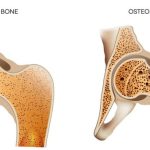What do I do if I have abdominal separation in pregnancy?
What is abdominal separation?
The body is a wonderful thing. During pregnancy, a certain growing bundle of joy starts to demand more space in the abdomen. Diastasis Recti Abdominis, or DRAM for short, is a separation of the left and right sides of the six-pack muscle (rectus abdominis) caused by a stretching and thinning of the linea alba which is the connective tissue that binds them down the midline. How much stretching occurs is thought to depend on many factors, including luck of the draw with your genetics, previous history with pregnancies and delivery, maternal age, birth weight, and whether or not you’re having twins/triplets (etc). The first thing to establish is that some amount of stretching is not only normal, but necessary, and will naturally resolve without intervention in the early post-partum period. However, some women experience a more significant degree of stretching that does not satisfactorily recover. Studies have found up to a third of women have persistent separation at twelve-months post-delivery.
How much is normal?
The diagnostic criteria for how much separation is normal does vary amongst the medical and allied health professions around the world. A general rule of thumb is up to 2cm breadth of separation is very common, and not associated with negative clinical outcomes across a large population of women. Physiotherapists will also assess the length and pliability of the remaining linea alba. It is important to have a well-functioning anterior abdominal wall, and the impact on this of different sized DRAMs can vary between people.
What problems can a large DRAM cause?
Across broad populations, there isn’t a clear and direct relationship between the presence of a DRAM and specific concerns, however a significantly weakened abdominal wall at the midline can play a role in the following issues:
– Poor core and abdominal strength
– Low back pain
– Pelvic pain
– Bulging of the abdominal contents at the midline, similar in appearance to a hernia
– Pelvic floor dysfunction and stress urinary incontinence
– Body image
From a physiotherapy perspective, the presence and size of a DRAM is measured, but the quality of the anterior abdominal wall is the most important indicator to address.
What can I do to prevent problems associated with DRAM?
Before pregnancy:
Keeping strong in the core is beneficial. We can’t guarantee it will prevent a DRAM occurring, but strong muscles reinforce the structure of their associated connective tissues over time. Exercise programs can be designed specifically to stiffen up these non-contractile tissues.
During pregnancy:
Moderate exercise during pregnancy is healthy for a variety of reasons. Once the baby bump is getting larger (usually during second trimester), excessive strain placed on the linea alba can be minimised through modification of exercises and activities:
– Rolling into side-lying before getting out of bed
– Minimising heavy lifting, pushing or pulling where possible
– Minimising loading the abdomen in a deep squat position (ie pulling stubborn weeds from the garden)
Particularly with young children to wrangle, it can be very difficult to avoid heavy tasks. The capacity for the body to cope well with heavy tasks will also vary between people. You may have heard of “doming”. This is a bulging visible at the midline during an abdominal contraction, and is an indicator of overload in this region. Some people will experience discomfort on muscle contractions, but the stretching itself is not necessarily painful or obvious on day-to-day activities.
Therefore a good guide is to adjust an exercise program to target the core muscles in positions that do not promote excessive stretching of the linea alba (ie side planks instead of sit-ups), and then monitor for any sign of doming or unusual sensations. This is easier in a supervised exercise format, such as Pilates classes.
Some women find improved comfort from pregnancy-specific compressive garments, such as SRC shorts or tubigrip.
First 12 weeks post-delivery:
The majority of natural resolution of a DRAM will occur during this period. It is important to give the abdominal region time and capacity to recover, so taking care with activities not to place excessive strain through the linea alba is recommended for the early weeks after delivery. For many, the DRAM will resolve without intervention, but this period is where the best opportunity lies to effect change where required. A physiotherapy assessment in the early weeks post-partum will help identify the extent of separation, plus if/what changes can improve outcome for those at higher risk. When cleared to recommence exercise, a targeted rehabilitation program can promote optimal recovery. Many women choose clinical Pilates as a tool for rehabilitation, as it is an excellent method for retraining anterior abdominal wall muscles in a low-impact format.
Compression garments exist on the market that are designed to be worn in the early post-partum period, including after C-sections. For any individual concerns around wound management, discussion with your doctor or obstetrician can give you specific advice. However the compressive support is designed to optimise pelvic floor and abdominal muscle contractions, assist with support to the pelvis and lower back, plus assist other concerns such as varicose veins and fluid retention.
Long-term recovery:
Beyond the first 2-3 months post-partum natural recovery will have slowed down, and there is less capacity to visibly shrink any remaining separation. However, well-designed strength programs are still very capable of achieving excellent outcomes in terms of stiffening up the anterior abdominal wall, improving strength and tone of the core muscles, and managing/overcoming associated pains.
Keshwani, N., Mathur, S., & McLean, L. (2021). The impact of exercise therapy and abdominal binding in the management of diastasis recti abdominis in the early post-partum period: a pilot randomized controlled trial. Physiother Theory Pract, 37(9), 1018-1033. doi:10.1080/09593985.2019.1675207
Laframboise, F. C., Schlaff, R. A., & Baruth, M. (2021). Postpartum Exercise Intervention Targeting Diastasis Recti Abdominis. Int J Exerc Sci, 14(3), 400-409.
Mommers, E. H. H., Ponten, J. E. H., Al Omar, A. K., de Vries Reilingh, T. S., Bouvy, N. D., & Nienhuijs, S. W. (2017). The general surgeon’s perspective of rectus diastasis. A systematic review of treatment options. Surg Endosc, 31(12), 4934-4949. doi:10.1007/s00464-017-5607-9
Sperstad, J. B., Tennfjord, M. K., Hilde, G., Ellström-Engh, M., & Bø, K. (2016). Diastasis recti abdominis during pregnancy and 12 months after childbirth: prevalence, risk factors and report of lumbopelvic pain. British Journal of Sports Medicine, 50(17), 1092-1096. doi:10.1136/bjsports-2016-096065
Thabet, A. A., & Alshehri, M. A. (2019). Efficacy of deep core stability exercise program in postpartum women with diastasis recti abdominis: a randomised controlled trial. Journal of musculoskeletal & neuronal interactions, 19(1), 62-68.






